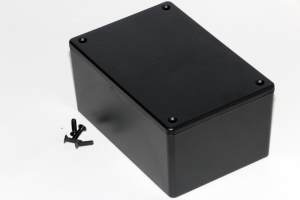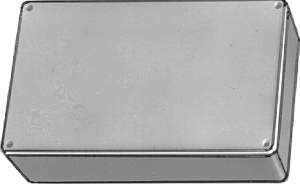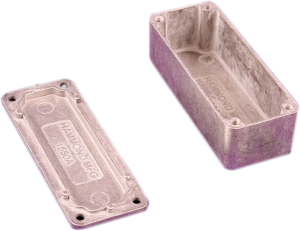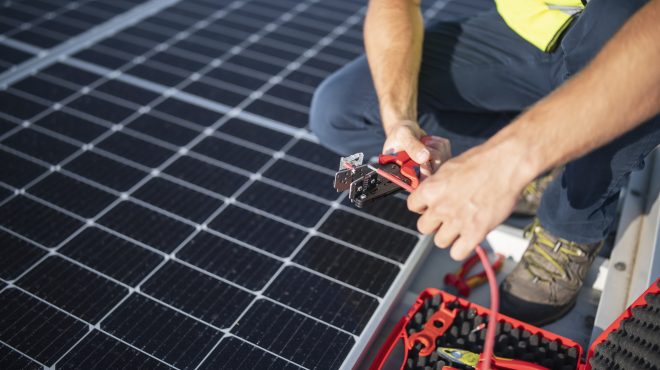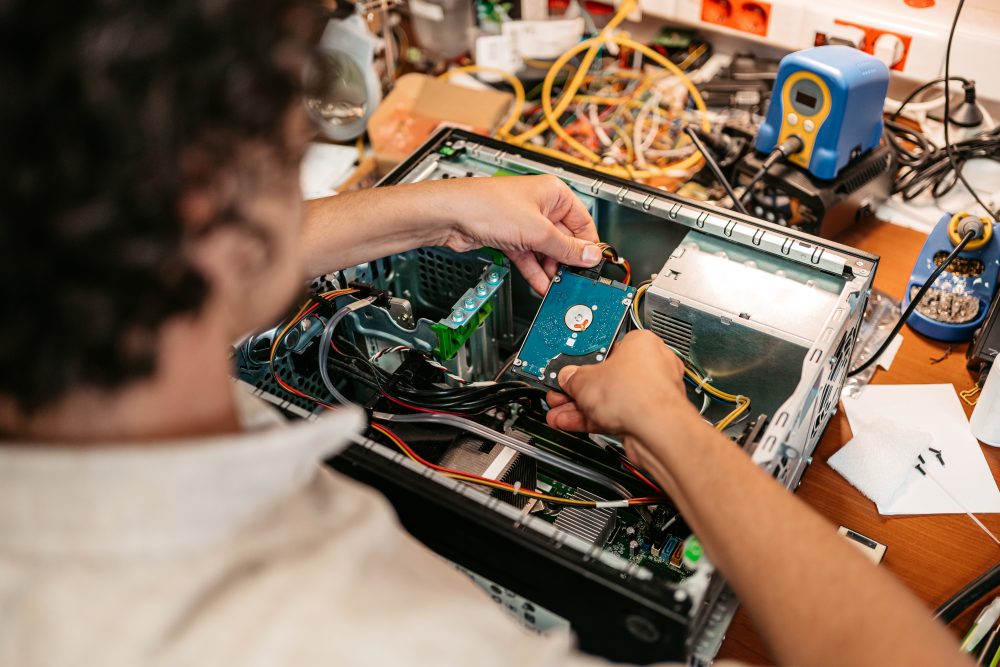
Expert Tips for Specifying Small Enclosures for Electronics
Selecting a small enclosure for electronics can be a difficult process that is often underestimated or overlooked. But what if, after completing the design, prototyping and testing phases, you find that the enclosure doesn't fit? In our article, we provide expert tips on how to specify the right enclosure during the design process.
Table of contents
- The size of enclosures for electronics
- The installation environment
- The right material of electronics enclosures
- EMC shielding
- Environmentally sealed enclosures
- Appearance and design of enclosures for electronics
- Precise dimensional drawings available for download
- The specification of small enclosures for electronics
The size of enclosures for electronics
To determine the right size electronics enclosure, it helps to know the key specifications of the printed circuit board (PCB):
- What is the size of the PCB?
- Should it be mounted in a horizontal or vertical orientation?
- What space is required on the sides for indicators, switches, connectors, cable entries and similar components?
- What height is required for components on the PCB or multiple horizontal PCBs?
Many plastic housings have slots on the sides to allow direct vertical mounting. They also have connection pieces at the top and bottom for horizontal mounting. Extruded aluminum enclosures often have slots on the sides to allow horizontal PCB mounting.
The installation environment
The selection of an enclosure is determined by the environment in which the finished product will be used. Depending on the external installation conditions, metal enclosures may be more suitable than plastic enclosures:
- Will the product be used outdoors or in an enclosed space?
- Can dirt and water get in?
- Do potentially harmful substances exist in the environment (e.g. oil, chemicals, etc.)?
- Should resistance to shock be considered?
- Should extremely high or low components be expected?
The right material of electronics enclosures
For small enclosures, the main materials to choose from are ABS or polycarbonate plastic, aluminum and fiberglass.
When the enclosure is installed outdoors, polycarbonate and fiberglass are the standard choices due to their UV stability. Fire resistance is also important and is specified by the UL94 standard. This standard tests horizontal or vertical burning of the material. The vertical burn test is more demanding and classifies the material as V0, V1 or V2, with V0 being the most powerful class.
Aluminum housings can be either die cast or extruded. Both variants are robust, impact-resistant, corrosion-resistant as well as electrically conductive and are easy to process. With a suitable seal between the cover and base, a high IP68 protection class can easily be achieved.
EMC shielding
Plastic enclosures have a particular disadvantage: they do not provide EMC shielding. If electromagnetic compatibility is a potential problem, different materials can be applied to the plastic enclosure to achieve different levels of shielding.
Metal enclosures, on the other hand, provide adequate shielding for most commercial applications as long as there is electrical continuity between the top, bottom and removable panels.
Environmentally sealed enclosures
When selecting an electronics enclosure, environmental sealing should always be considered. This is defined by the international standard DIN EN 60529. The various degrees of protection are referred to as IPxx. The first digit indicates the protection against solid foreign bodies and the second digit defines the protection against water.
Enclosures with the IP54 degree of protection are suitable for general purposes. Environments with contamination and water ingress would require protection ratings such as IP66, IP67 or IP68. The highest specification is IP69k, which is specifically designed for high pressure or steam jet cleaning.
Appearance and design of enclosures for electronics
When it comes to the appearance and design, plastic enclosures and aluminum enclosures vary in their options. There are different types of plastic enclosures, which can be made of transparent or opaque material. These enclosures are available in a variety of colors. In addition, there is a possibility of forming them individually from a transparent material. The corresponding lids for these enclosures have recesses to insert membrane keyboards and displays. Aluminum enclosures, on the other hand, can be either painted or anodized and are available in a variety of colors.
Precise dimensional drawings available for download
In addition to providing technical support to customers during the design phases, enclosure manufacturers such as Hammond also provide dimensional drawings in PDF and CAD formats to support design and modification requirements, technical details and product features.
In Bürklin Elektronik’s online store, you can generate CAD models for your selected products. You can choose between 2D PCB symbols and footprints and a simple 3D model.
The specification of small enclosures for electronics
Specifying small electronics enclosures is a complex task that is often not considered in the design phase. The selection requires a lot of experience and know-how, be it in choosing the right material, considering environmental factors or adapting to individual customer needs. In the end, it is a great deal of design effort that results in a feature-rich enclosure for use in a wide variety of environments.
At Bürklin Elektronik, you will find enclosures and accessories for a variety of applications. Starting with small housings and module housings in diverse sizes and variants, through switch cabinets to plates and sheets – for example, for protection against electromagnetic waves.

